2017-08-23
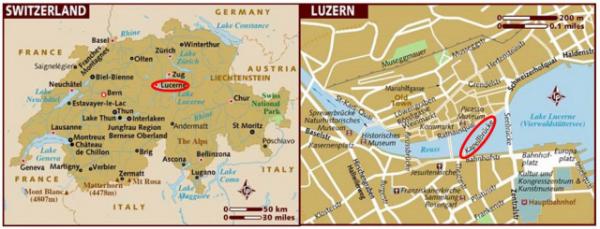
【Aiden in English】
Finally, off the ship in Basel, Switzerland, I felt the smooth glide of the boat again. Replaced by a bumpy, unpleasant bus ride to our next destination, Lucerne, I immediately missed the blissful form of travel provided on the Viking Kvasir. However, the transfer off the boat was slightly buffered by a long bus ride, during which I took a good nap. I didn't miss the critical section on the trip, though. A journey to where? Lucerne is our final point on this European Expedition, and the most expensive. Although small, Switzerland has one of Europe's highest QOL ratings. And the only thing cheaper you'll find in Switzerland is skiing. Being the eighth-largest city in Switzerland, Lucerne is the entire pre- and post-extension of the Viking Rhine Getaway. Due to Switzerland's unique position in Europe, there are four national languages, each with its own distinct cultural heritage. Italian, German, French, and Romansh (near-dead Latin dialect). Lucerne sees all four cultures, mainly the first three, combined. Viking chooses Lucerne to demonstrate the coexistence of many cultures, as well as their blend together. Additionally, there appears to be a large number of Chinese tourists around. Today was nothing more than an exploration of this beautiful city. Lucerne, situated at the foot of the Alps, holds many striking views of mountain peaks above the rooftops of half-timbered burgher houses. I wouldn't say they're snowy, considering global warming has become a significant issue, regardless of those who dispute its existence. The looming Mt. Pilatus and Mt. Rigi, which range up to 1,800 meters (6,000 feet) in height, can be seen from anywhere in the city, except seemingly out of our window at the Continental Park Hotel. Instead, a close-up courtyard apartment came into our sight. Speaking of which, apartments are popular. People around Lucerne who typically rent or have bought apartments can live a proactive city life. Not suitable for tourists. During the evening, no one stays indoors when the sun sets, and the temperature is just right. As a result, tourists and locals have tough competition. Luckily, we captured many significant landmarks before the city's rush hours. As you would expect, the floor of nearly all streets was made of cobblestone. Architecture-wise, it seemed pretty much like a modernized city, simply a few years behind the metal and glass jungle of New York. Underground shopping malls and rows upon rows of top-notch Swiss watch sellers, presumably attracting all Chinese tourists, seemed to be a common feature of any city worldwide. However, we rushed through most of the town due to the shortened time. Then what separates Lucerne from other places in the world? It all starts with the lake. The Reuss River empties into Lake Lucerne, approximately two to three kilometers from the city. The crystal-clear water is home to certain wild animals, particularly modest ducks and elegant swans. The more you get to know them, the more you realize that the ducks are the ones with elegant temperaments, while swans are very aggressive. Following them were usually a group of Chinese people dumping mountains of bread, crackers, and a suspicious white powder into the lake, watching the swans bite at the crumbs. Yet even with their close attention, they refused to read the sign that said, 'Do not feed the swans.' It was explicitly written in Chinese. I don't understand their way of thinking at all. When there's a river, there are bridges. In this case, when the water runs through the city, you can expect the bridges to be fully decorated. Well, at least one is. Unlike the Venetian canals, the Ruess River is too long for sophisticated design. However, the Chapel Bridge from the Medieval Ages could rival the level of decor I'm describing. Entirely made of wood, it was built in 1333 and resembles a tunnel, enclosing those who walk through it. Medieval paintings hung from support beams in the ceiling, providing entertainment in case of a traffic jam. However, no cars came through; only pedestrians were present. That shows how many people walk over this bridge. Of course, being wooden, unfortunately, it went through a fire in 1993, blackening some paintings that were hardly restored to their original color. This is the more amicable tradeoff between that and losing the bridge. Behind the ruckus was the great alpine backdrop, straight out of a postcard. Who needs postcards when you can make hundreds with a hobby like Mom? We spent two hours looking for an ideal spot to take a perfect picture outside town. Ideally, it is not reality, but we came close to the ideal. And although the Alps aren't as majestic as they could be in winter, they're still the Alps, which should give the postcards some value. 【红霞译文】 在瑞士巴塞尔“国王”城我终于下了船,以往安安稳稳航行的感觉转眼即逝,取而代之的是通往卢塞恩“光晕”城最后一段颠簸起伏的山路,禁不住让我想起游轮上吃香喝辣的日子。借乘长途汽车转换目的地之际,我得好好打个盹,这样才不至于到了关键时刻无精打采。马上要去哪儿?
卢塞恩是我们出游欧洲的终点站,可被视为此行消费最高的地方,瑞士虽然版图面积有限,但生活质量却名列欧洲前茅,这里唯一便宜的玩意非滑雪莫属,作为瑞士第八大城市,卢塞恩就这样被维京“海盗”游轮纳入莱茵之旅前导或后续旅游热线。由于所在地理位置特殊,瑞士总共设有意大利语、德语、法语和罗曼什语(类似拉丁语)等四种官方语言,每种语言均代表一定程度的相关文化。卢塞恩通用全部语言,只不过前三种比较流行,彼此交互影响和谐共存,维京游轮之所以选定卢塞恩无非想让游客在体验文化多元化的同时充分欣赏文化相容性。另外,这里好像也有不少中国游客。
今天用来专程参观城市美景恐怕再好不过。卢塞恩坐落于阿尔卑斯“白”山脚下,半木结构居民建筑林立栉比,屋后峻岭挺拔层峦叠嶂,我不敢说巅峰尽处依旧积雪未化,不管人们相信与否,全球暖化已然成为严重议题。从卢塞恩各个角度放眼远望,海拔近乎1,800米/6,000英尺高的龙山云峰和山中皇后清晰可见,不过我们入住的大陆公园酒店窗外却是另番场景,唯有公寓楼间的庭院一览无余。说到这里,公寓楼在卢塞恩非常盛行,附近居民一般不是租房就是买套公寓来迎合节奏疯狂的城市生活,但对于外来观光的我们未必是件好事。随着太阳西下夜幕降临,在气温仍然保持适中的时候,没人乐意呆在室内,结果游客与本地人蜂拥而至,幸好我们在高峰期到来之前已经看完很多重要景观。 如你所料,这里的街道路面几乎都是由鹅卵石铺垫而成。站在建筑角度,卢塞恩看起来宛若一座现代化城市,顶多比纽约金属玻璃钢高楼大厦沧桑了几年而已;地下商城内瑞士高挡手表店一家挨着一家,由此吸引了大批中国游客,其阵势不亚于世界其它各地,但因为时间关系,我们情愿抓紧机会多走多看。那么卢塞恩与别的地方究竟有何区别?
一切还得都从湖说起。罗伊斯“鞋匠”河汇入卢塞恩湖继续往城外延伸两三公里,河水清澈,致使成群结队的野生动物慕名而来,尤其是性情谦和的水鸭和仪态优雅的天鹅,你越是跟它们混熟了,越是发现水鸭温文尔雅,而天鹅盛气凌人。尾随在水禽身后通常是一帮中国游客,他们拿出囤积成山的面包、饼干以及可疑的白色粉末扔向湖里,眼睁睁盯着天鹅叼走碎渣烂末,这些游客明知中文专有告示“禁止乱喂天鹅”,但还是有章不循,我真纳闷他们到底怎么想的。
哪里有河流哪里就有桥梁。依照这种逻辑,当河水流经卢塞恩,你肯定期望桥面被装饰一新。没错,这里至少有一座大桥就是如此。罗伊斯河流域太长,因此没法像威尼斯运河那样精工细雕各个桥梁,但中世纪时期的教堂桥却巧夺天工,全部由木材组成,1333年动工修建,表面来看如同一条隧道,实则一座遮蔽的步行廊桥,顶蓬横梁上悬挂着中世纪绘画作品,每逢交通拥挤的时候权可用来消遣娱乐,只是桥上禁止汽车通行仅向过往行人开放,由此可见其使用率该有多高。当然,正因为木制结构,1993年大火让它惨造损坏,有些烧焦的绘画至今没有恢复原貌,能保住大桥已然是不幸中的万幸。 人头涌动的市区背后是巍峨俊秀的阿尔卑斯山脉,美得好似一张明信片,有妈妈这样百拍不厌的摄影爱好者在场谁还稀罕明信片呢?到头来,我们不惜豪掷两个小时的功夫跑到郊外捕捉完美瞬间,虽然理想远非现实,但我们十分接近理想。夏日的阿尔卑斯山脉不及冬季雄伟震撼,然而阿尔卑斯山脉毕竟是阿尔卑斯山脉,明信片上的风光也令人感觉美轮美奂。 Today in History(历史上的今天):
2017: Lucerne—Salvation through Christ, Swiss(瑞士光晕市─救赎之城) 2017: Lucerne—Romantic Pearl of Swiss, Swiss(瑞士光晕市─浪漫明珠) 2017: Lucerne the Mournful Lion, Swiss(瑞士光晕市─垂死狮子像)
2017: Lucerne the Chapel Bridge, Swiss(瑞士光晕市─教堂廊桥) 2017: Basel the Fable Basilisk, Swiss(瑞士国王市—蛇王仙境)
2017: Basel—Home to Roche & Novartis, Swiss(瑞士国王市—罗氏与诺华药业总部) 2010: 天大地大(Heaven & Earth) 2009: 证书奖状奖杯(Awards) 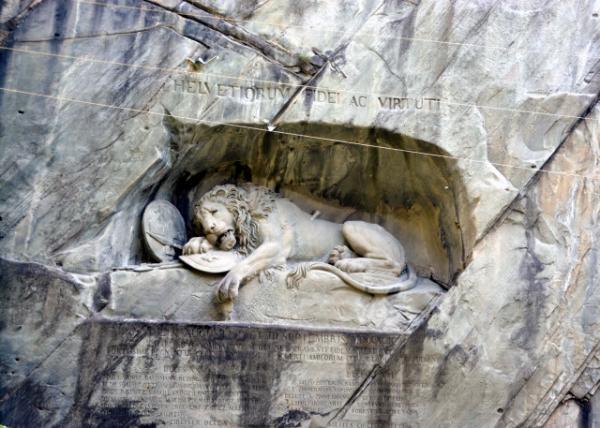
Mortally-Wounded Lion by Lukas Ahorn, Lion Monument (狮子纪念碑──卢卡斯·阿霍恩“光·枫树”设计的《垂死狮子》) 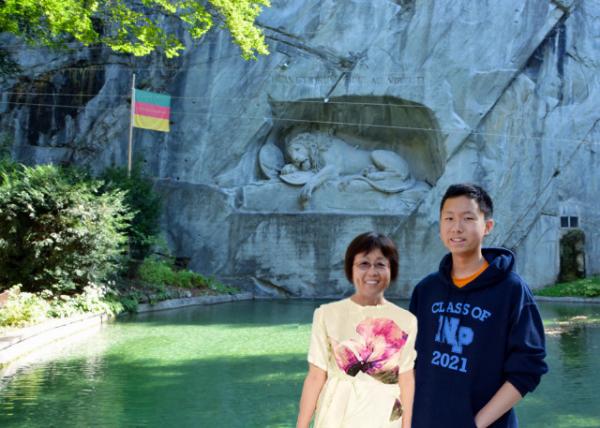 Helvetiorum Fidei ac Virtuti or To the Loyalty & Bravery of the Swiss Helvetiorum Fidei ac Virtuti or To the Loyalty & Bravery of the Swiss
(“献给瑞士人的忠诚和勇敢” 08-23-2017) 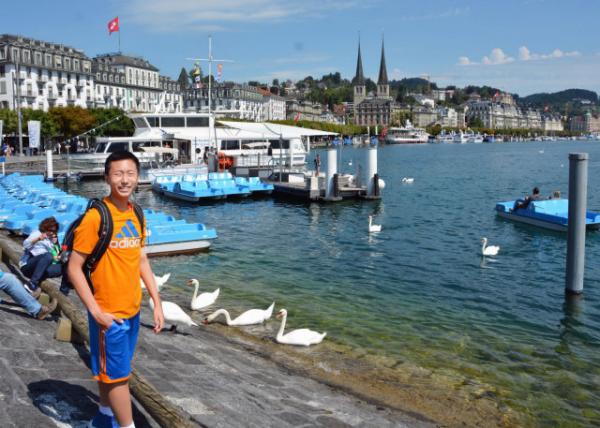 Hofkirche Viewed from Seebrücke Hofkirche Viewed from Seebrücke
(从湖桥远望宫廷教堂 08-23-2017) 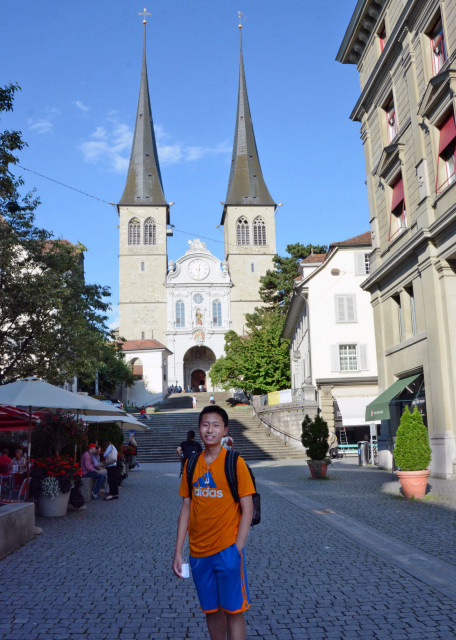
Hofkirche St. Leodegar (圣光宫廷教堂 08-23-2017) 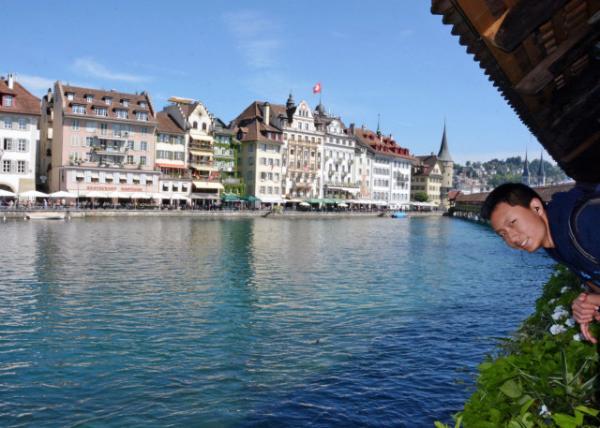 Reuss River Viewed from Chapel Bridge Reuss River Viewed from Chapel Bridge
(从教堂桥近观鞋匠河 08-23-2017) 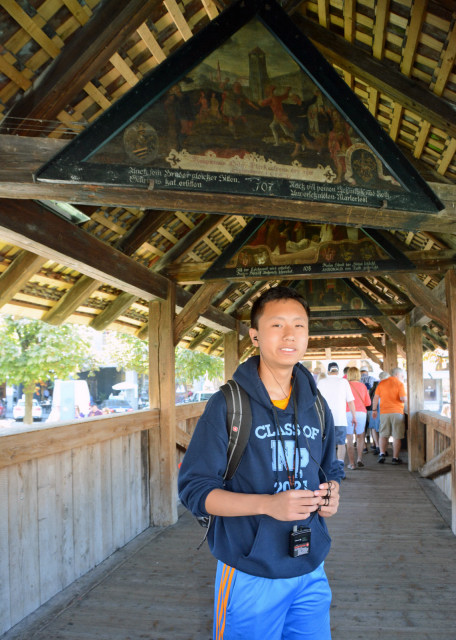
Interior Chapel Bridge (教堂桥·内景 08-23-2017)
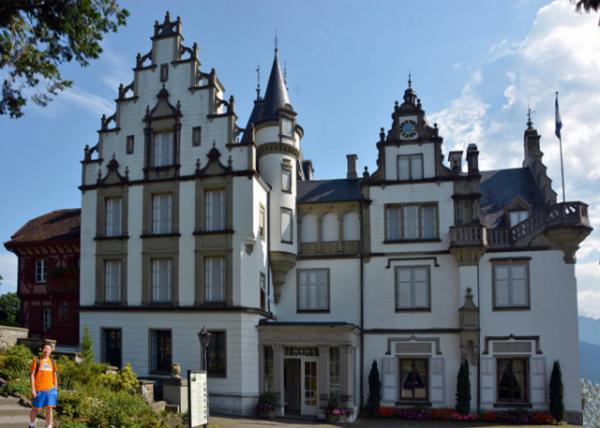 Façade of Schloss Meggenhorn (强大山城堡·外观 08-23-2017) Façade of Schloss Meggenhorn (强大山城堡·外观 08-23-2017)
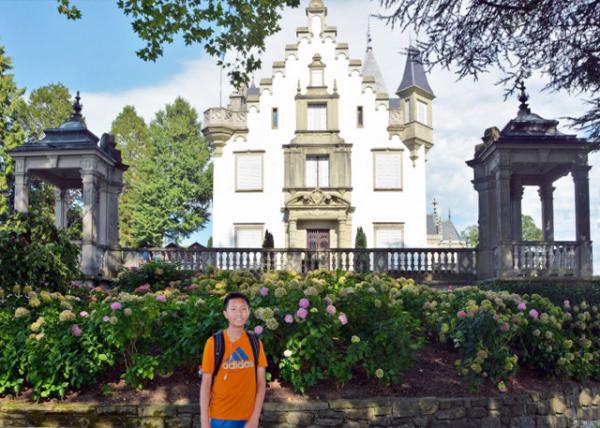 Garden Turrets of Schloss Meggenhorn Garden Turrets of Schloss Meggenhorn
(强大山城堡·花园角塔 08-23-2017) 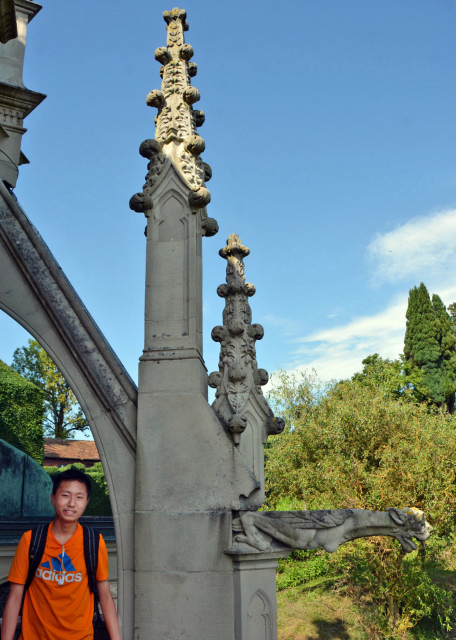
Flying Buttressesof Schloss Meggenhorn (强大山城堡·飞扶壁 08-23-2017) 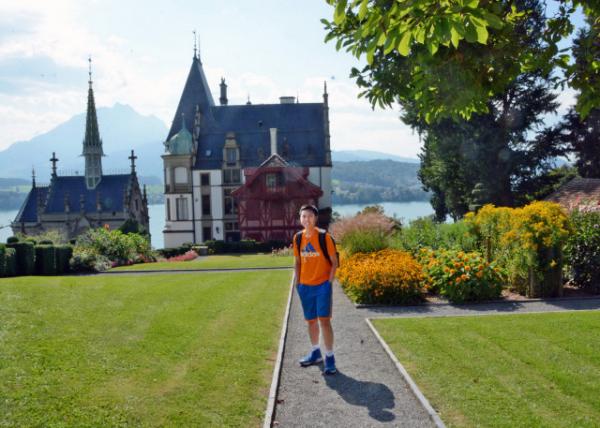 Garden of Schloss Meggenhorn Garden of Schloss Meggenhorn
(强大山城堡·花园 08-23-2017) 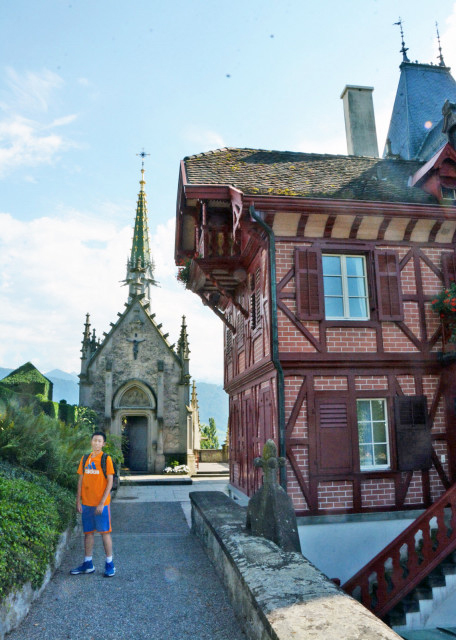
Chapel of Schloss Meggenhorn (强大山城堡·教堂 08-23-2017) 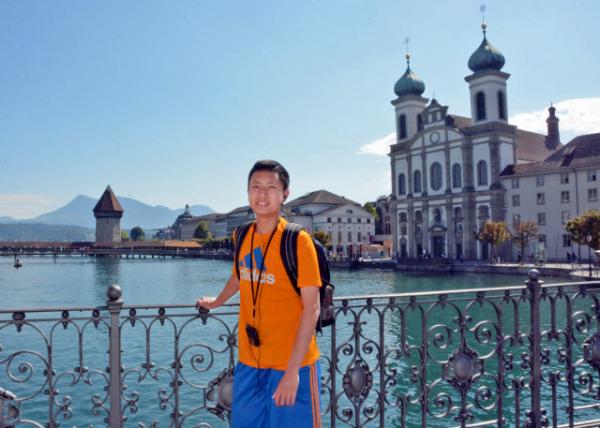 Jesuit Church (耶稣会教堂 08-23-2017) Jesuit Church (耶稣会教堂 08-23-2017)
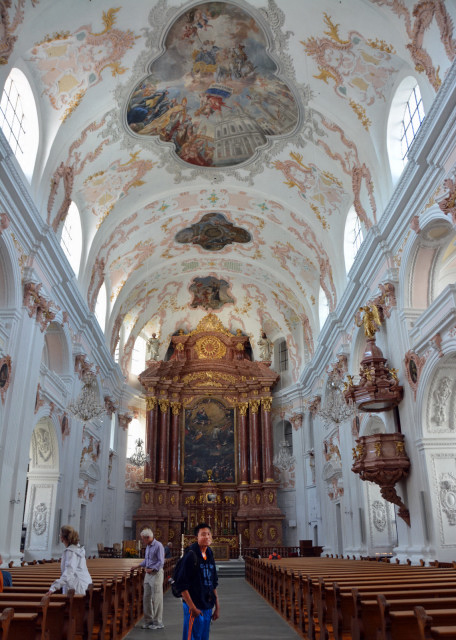
Nave of Jesuit Church (耶稣会教堂·主经堂 08-23-2017) 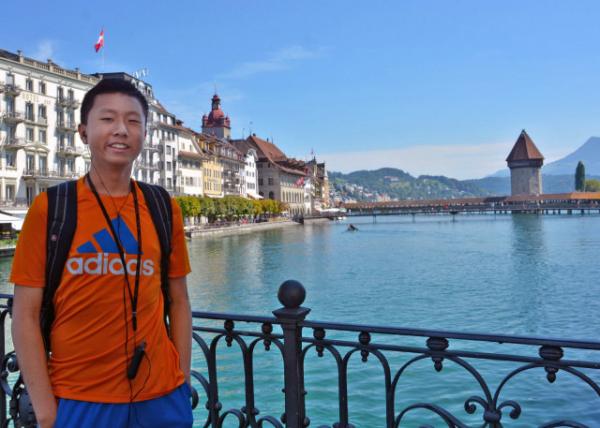 City Hall & Water Tower of Chapel Bridge City Hall & Water Tower of Chapel Bridge
(市政厅与教堂桥水塔 08-23-2017) 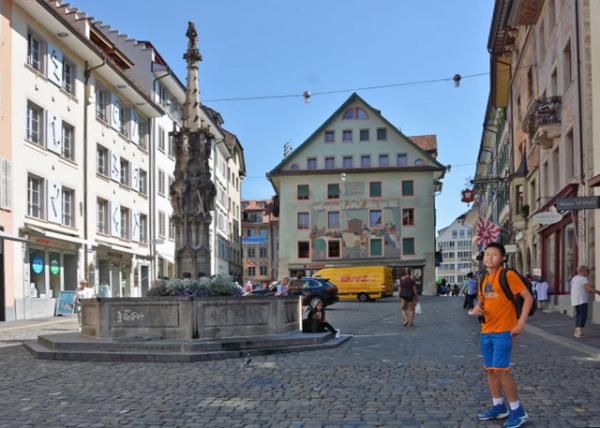 Weinmarkt Springbrunnen Weinmarkt Springbrunnen
(葡萄酒市场-泉水池 08-23-2017) 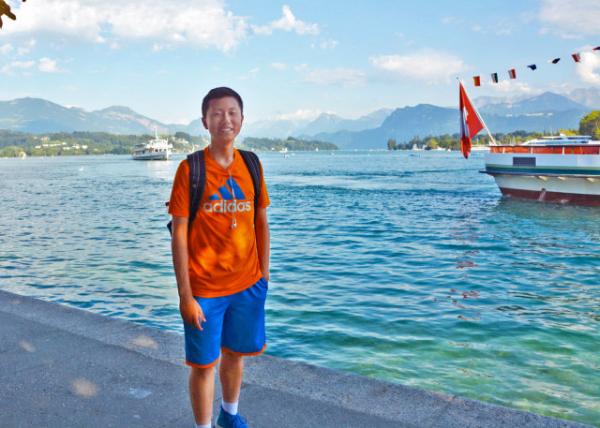 Lake Lucerne Viewed from Seebrücke Lake Lucerne Viewed from Seebrücke
(从湖桥近观光晕湖 07-23-2017) 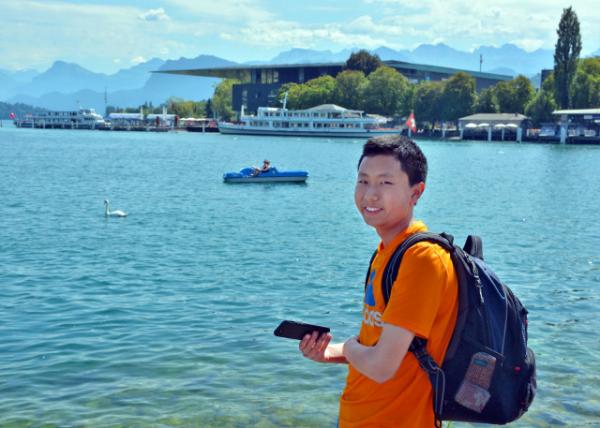 Lucerne Culture & Congress Centre Lucerne Culture & Congress Centre
(光晕文化和会议中心 08-23-2017) 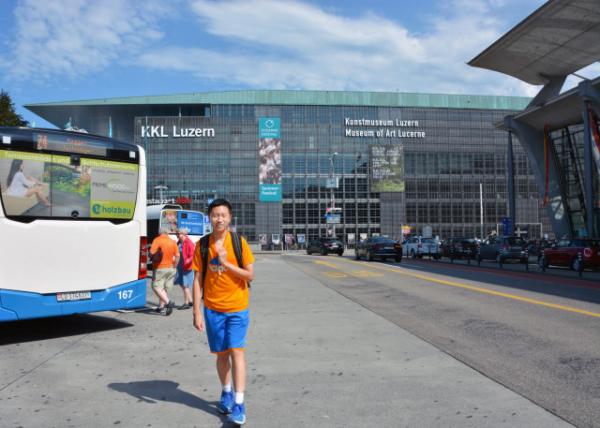 Lucerne Culture & Congress Centre Lucerne Culture & Congress Centre
(光晕文化和会议中心 08-23-2017) 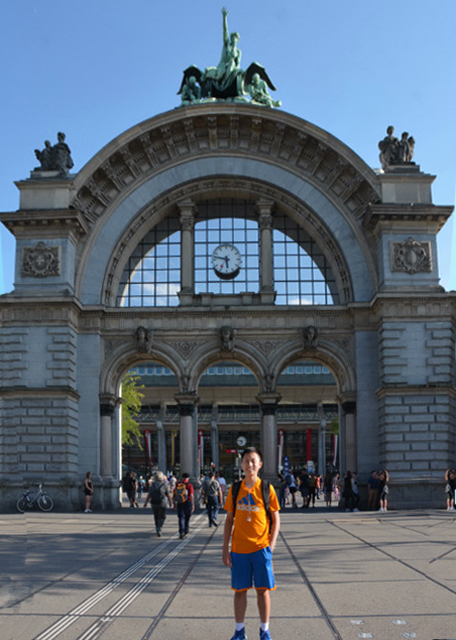
Railway Station (火车站 08-23-2017) 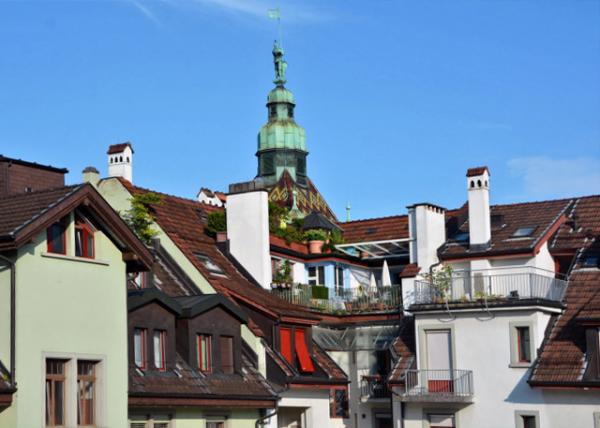 Hotel Waldstätterhof Viewed from Hotel Continental Park Hotel Waldstätterhof Viewed from Hotel Continental Park
(从洲际公园酒店近观森林公园酒店) Crosslinks(相关博文): Switzerland(出游瑞士)
Europe(欧洲掠影) 8th Grade(初中三年级) |
